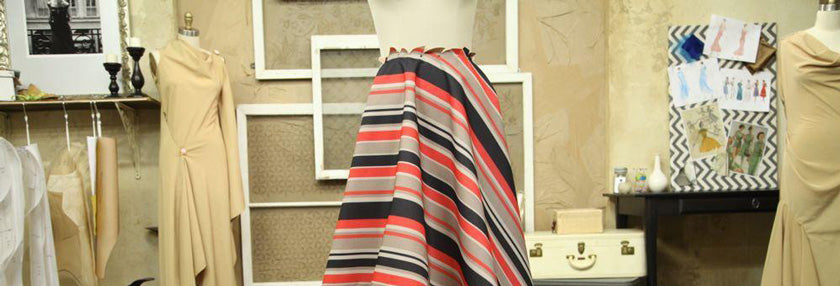Your Cart is Empty
Free Shipping On All Orders In December - No Coupon Code Necessary
Free Shipping On All Orders In December - No Coupon Code Necessary
Free Shipping On All Orders In December - No Coupon Code Necessary
Free Shipping On All Orders In December - No Coupon Code Necessary

August 31, 2017 5 min read
We all know that there are thousands of sewing patterns available in stores and on websites. However, you need to acknowledge that the sewing pattern size may differ to the ready to wear size that fits you. It is important to know that dress pattern sizing schemes are not connected or correlated with the ready to wear sizing schemes. Besides, each company that creates sewing patterns uses its own sizing scheme. As you probably imagine, you need to be able to adjust the sewing pattern to get the perfect fit.
Another aspect related to this issue is the body measurements and the shape. It is possible that your body measurements might not sit perfectly within a particular size on the sewing pattern. Most people need to adjust patterns to achieve fitted garments. Although you need to understand that not all the patterns will fit and hang the way the designer intended, we are here to show you how to accomplish an ideal fit from your sewing patterns.
Starter tips
It is possible that you are in between pattern sizes. In this case, you should choose the larger size because it is always easier to adjust down.
You need to measure your waist. To find the right natural waistline, you need to tie a piece of cotton tape loosely around your waist. Your natural waistline is where the cotton tape falls.
How to get the ideal fit
Getting the ideal fit requires a few things to do. This process differs depending on the garment type that you want to sew. So here we’re going to show you how to get the ideal fit for various types of garments:
You need to use your waist and hip measurements to pick the size from your sewing pattern’s chart. Some people have problems fitting their garments on the thighs, for example. If you have this issue, then you are recommended to take the measurements of your thighs and compare them to the pattern pieces to see how the garment will fit you. If you suppose it will be too tight, then you should choose a looser fitting pattern.
It is important to get a good fit at the crotch. For this, you need to measure from the bottom of where the waistband will sit at the front, between the legs, and up to where the bottom of the waistband will sit at the back. Once you finish your measurements, compare the results to the pattern pieces. If you find any discrepancies, it is required to make some adjustments.
Another measurement that is essential is the length. Make sure you get the right length, to avoid ankle swingers or puddles of fabric at the end of your legs. To ensure the length is right, you can check with the shoes you think you will wear your skirt or trousers.
One of the most important measurements when you want to create dresses, tunics, tops, and blouses is the cup size. When you try to find out the right cup size, you are recommended to wear a well fitted bra or even the bra you plan to wear underneath your garment.

To get the right measurement, you may need to have someone to assist you. Ask your assistant to help you keep the tape measure level. Position the tape measure high under your armpits, above your bust line, and measure all the way around your body. Once you noted this measurement down, it is time to take your bust measurement and deduct the high bust measurement from the bust measurement. This will determine the cup size.
Most patterns are made for B cups. So if you are a B cup or under, then it is easy to get the right fit. All you need to do in this case is use your pattern packet’s chart and pick the size nearest to your bust measurement. If you have an A cup there will only be a small difference in size, so it will be easy to make the necessary adjustments. However, if you have a C cup or above, then thing will be a little more complicated. You don’t need to worry, as we’ll show you what you need to do in this case.
Basically, you have two options:
Working with the pattern pieces
Cut out the tissue paper to match the size you chose. If your waist and hip measurements differ from the standard pattern size, you need to graduate in or out to get the right size for the waist or hip lines.
Pin any darts by creasing the paper and pinning. You also need to pin the side seams and shoulders. This means you will have half of your garment made out of tissue paper.
Try on your garment, and have your assistant check the fit of the back to see whether there are any alterations needed. The center front line should be perpendicular to the floor and run down your chest’s center.
Remember that it is possible that your cut pattern pieces measure a few inches bigger than your body measurements.
Final advice
It is better to check the fit before you cut into your fabric. For this, you should make a toile in calico, an old sheet, a table cloth, or scrap fabric. Use the largest size stitch on your sewing machine to sew it together so you can easily unpick if you need to make any adjustments. In case you need to make any alterations to the toile, make them and then use the toile as your pattern piece.